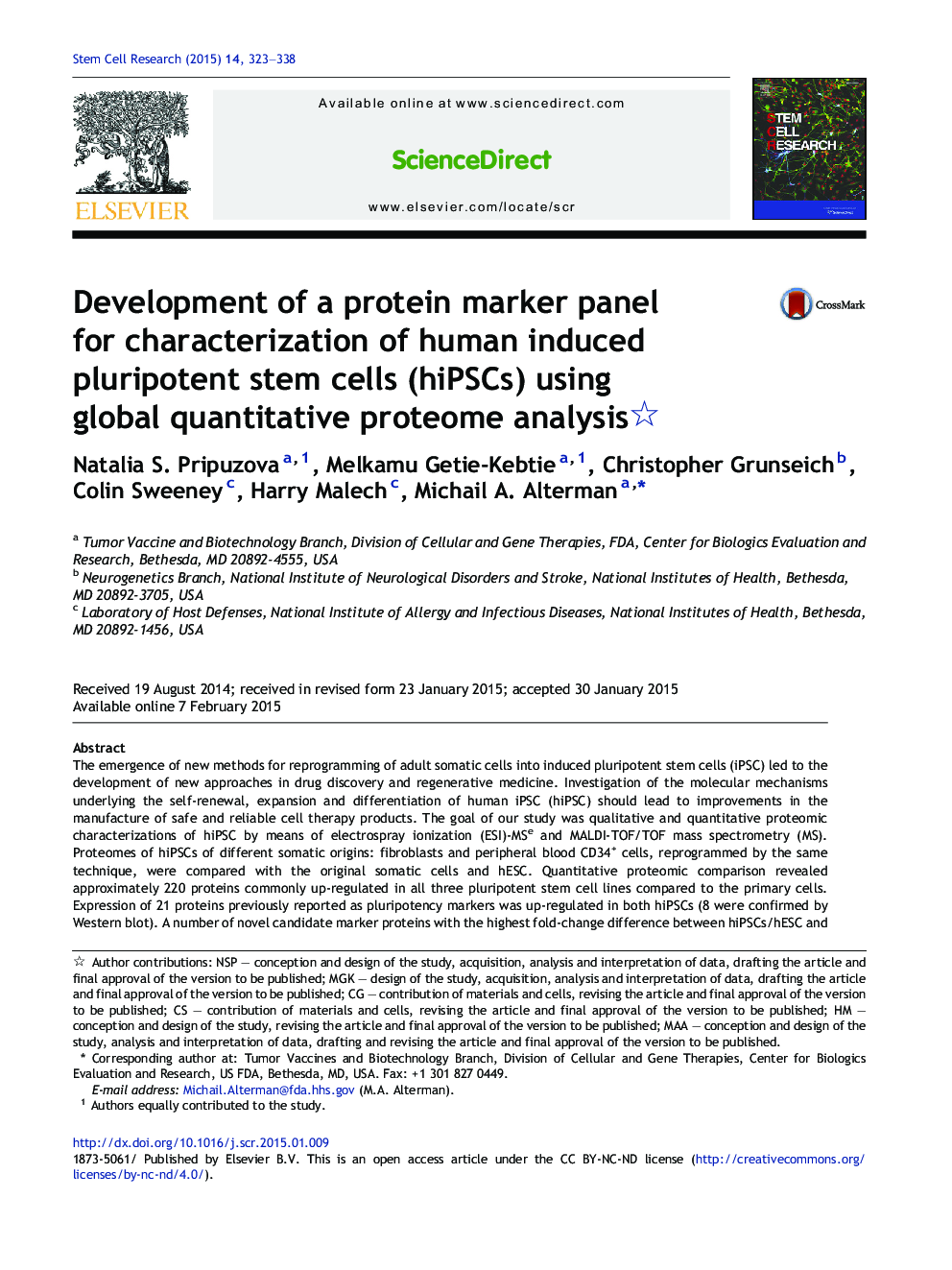| کد مقاله | کد نشریه | سال انتشار | مقاله انگلیسی | نسخه تمام متن |
|---|---|---|---|---|
| 2094187 | 1081993 | 2015 | 16 صفحه PDF | دانلود رایگان |

• Comparative proteomics of different origins hiPSCs, hESC and parental somatic cells
• A panel of 22 candidate marker proteins of hiPSC developed
• 220 proteins up-regulated in all three pluripotent stem cell lines vs. primary cells
• The signaling pathways up-regulated in hiPSC lines after reprogramming described
• Expression of 22 markers confirmed in 8 additional hiPSC lines of different origins
The emergence of new methods for reprogramming of adult somatic cells into induced pluripotent stem cells (iPSC) led to the development of new approaches in drug discovery and regenerative medicine. Investigation of the molecular mechanisms underlying the self-renewal, expansion and differentiation of human iPSC (hiPSC) should lead to improvements in the manufacture of safe and reliable cell therapy products. The goal of our study was qualitative and quantitative proteomic characterizations of hiPSC by means of electrospray ionization (ESI)-MSe and MALDI-TOF/TOF mass spectrometry (MS). Proteomes of hiPSCs of different somatic origins: fibroblasts and peripheral blood CD34+ cells, reprogrammed by the same technique, were compared with the original somatic cells and hESC. Quantitative proteomic comparison revealed approximately 220 proteins commonly up-regulated in all three pluripotent stem cell lines compared to the primary cells. Expression of 21 proteins previously reported as pluripotency markers was up-regulated in both hiPSCs (8 were confirmed by Western blot). A number of novel candidate marker proteins with the highest fold-change difference between hiPSCs/hESC and somatic cells discovered by MS were confirmed by Western blot. A panel of 22 candidate marker proteins of hiPSC was developed and expression of these proteins was confirmed in 8 additional hiPSC lines.
Figure optionsDownload high-quality image (180 K)Download as PowerPoint slide
Journal: Stem Cell Research - Volume 14, Issue 3, May 2015, Pages 323–338